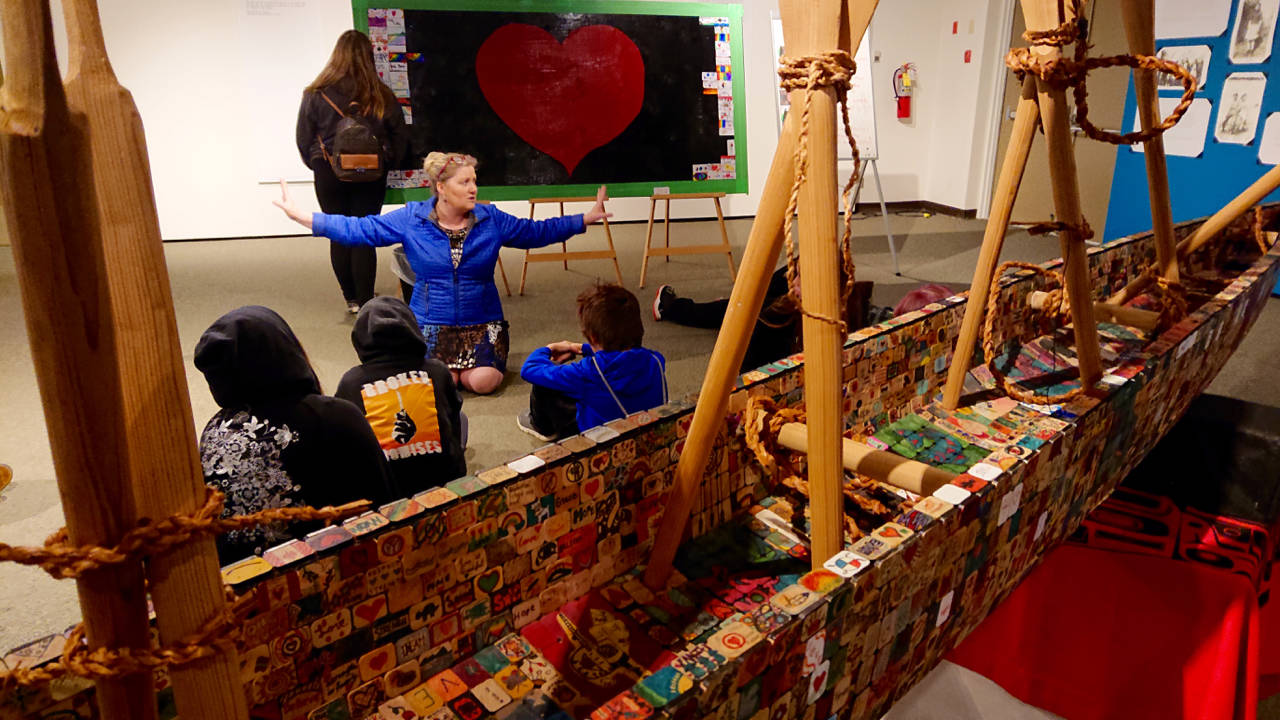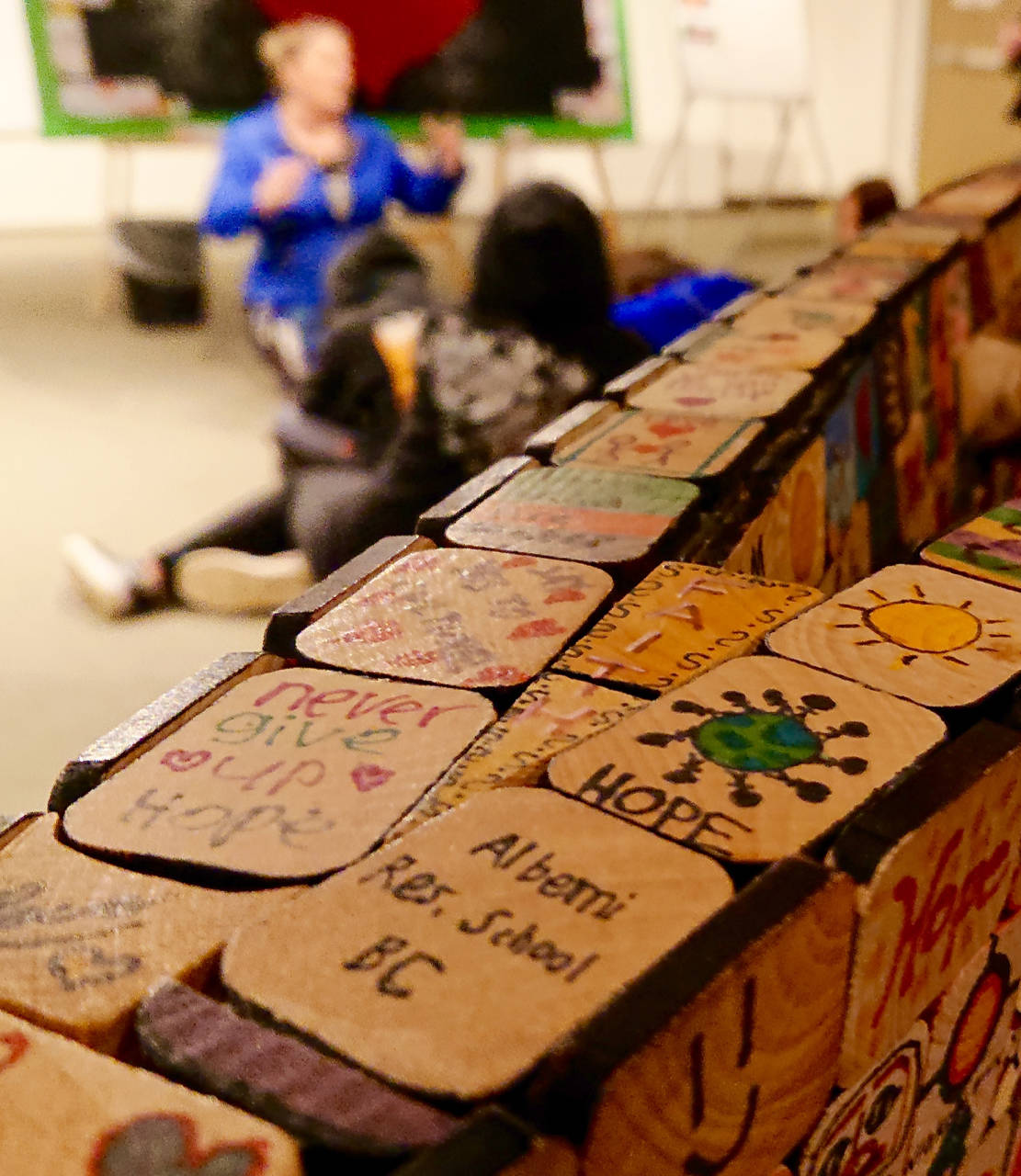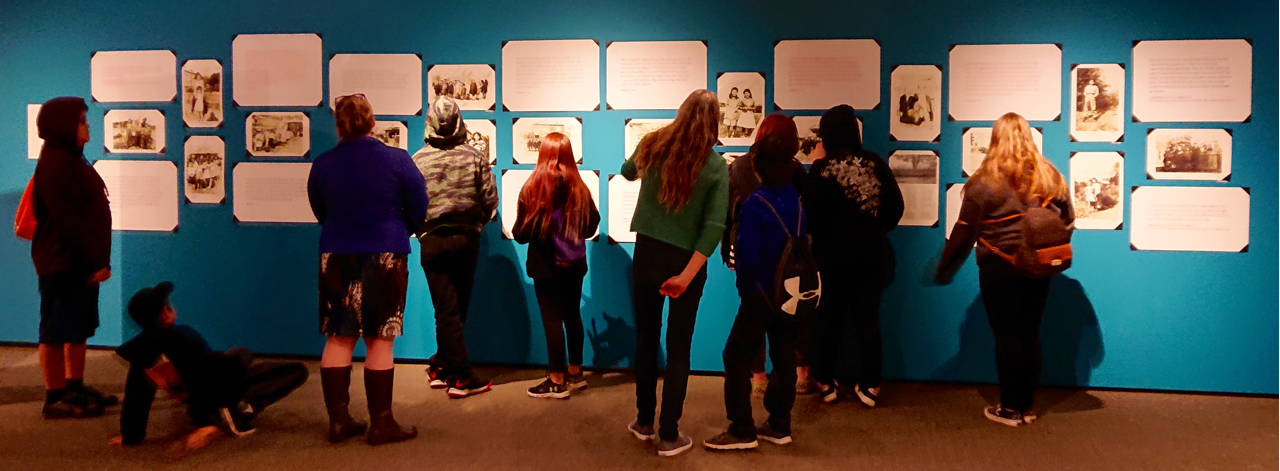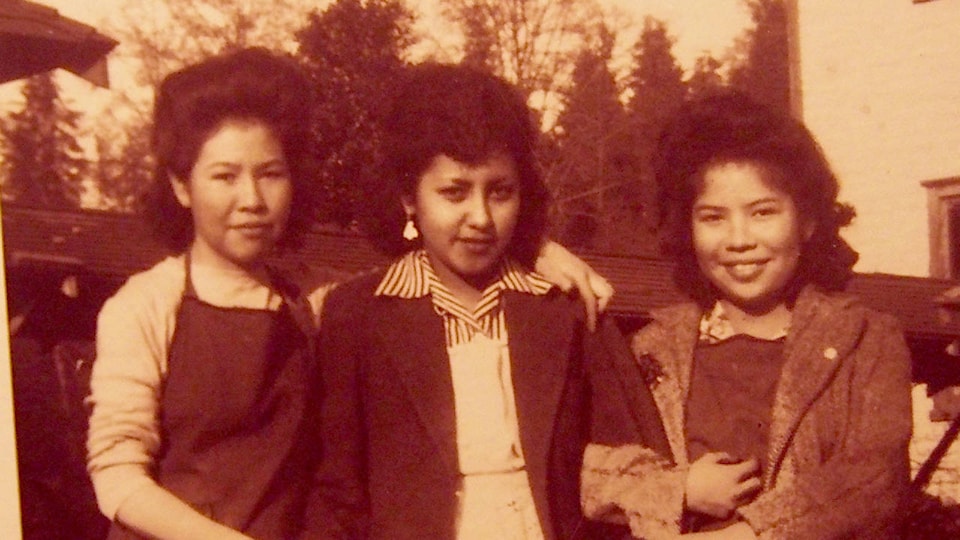MIKE YOUDS
SPECIAL TO THE NEWS
Cheerful glimpses of childhood innocence create a profoundly stirring backdrop for painful stories of loss and suffering in Speaking to Memory/Project of Heart, a pair of travelling exhibits on show at the Alberni Valley Museum.
“It’s a three-way partnership with the school district and the Nuu-chah-nulth Tribal Council,” said Shelley Harding, museum co-ordinator. “The exhibition itself has been travelling around the province for a couple of years now. It’s well designed and developed.”
Speaking to Memory is comprised of dozens of black-and-white photographs, a uniquely personal glimpse into the disturbing legacy of the residential school nightmare. They were taken in the late 1930s and early 1940s, mostly by Beverley Brown when she was a young student at St. Michael’s school in Alert Bay. Brown hailed from Bella Bella and was given a camera by her father earlier on. She took hundreds of photos, later donating her collection to UBC’s Museum of Anthropology.
The images mounted on museum walls are mostly school-age portraits of friendship and camaraderie, the sort of heartwarming, vintage shots that would look at home in any family album. Juxtaposed with textual recollections of residential school survivors, they stir profoundly different emotions — grief, pain, sorrow and shame to name a few.
At the centre of this emotional tempest rests a calming, cathartic installation — the Project of Heart Canoe — a collective expression from the heart, infused with hope, inspiration and a desire to heal. The symbolic canoe was built by Tsleil-waututh carver Derrick George and his three sons, who presented it to B.C. Teachers Federation as part of a Truth and Reconciliation commemoration project in 2012. Since then the sculpture, covered with 6,000 handwritten tiles honouring victims, survivors and their families, has become a permanent installation in the U’Mista Museum, located next to the ruins of the St. Michael’s residential school in Alert Bay.
“It’s part of a national initiative to bring the issue and the stories of residential schools to a school level,” Harding explained of the touring show.
Beyond the canoe, with its paddles thrust skyward, Project of Heart incorporates an interactive and educational component, a mounting board with a big, red heart at its centre. Visitors are invited to post personal responses to the exhibit.
“We’ve created lessons to go along with visits for kindergarten to Grade 7,” said Lisa Tremblay, part of the school district’s First Nations education team.
Tremblay busily hosted two groups Thursday, including one from Bamfield Community School.
Every school in the district has the opportunity to book online and tour the exhibit with Nuu-chah-nulth education workers.
“Hopefully it’s not the whole conversation, it’s just the beginning,” Tremblay said. “The presentations and the lessons are quite age-appropriate.”
Brown’s pictures bring the residential school experience into focus, using a familiar medium as a portal through which visitors can better understand its catastrophic impact on people. The shots were evidently taken some distance from the supervision and control of school authorities.
“For eight years she went and took pictures at the school,” Tremblay told students. “That was very unusual. I’m surprised she was allowed the camera at all.” She encouraged them to feel safe talking about their feelings on the powerful exhibit.
“We’re all in the same canoe,” she continued. “We’re trying to move forward and make things better.”
On a dimly lit rear wall of the exhibit hang floor-to-ceiling paper scrolls that bear official apologies from the Canadian government, RCMP and churches that operated residential schools. Dense with words, the scrolls seem nonetheless sterile, lacking emotional gravity compared with the rest of the exhibit, suggesting an apology is but a hollow expression unless brought to life by genuine acts of reconciliation.
The show is scheduled to move to Ucluelet after the Albern Valley Museum.



